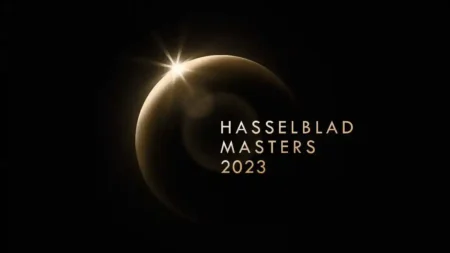Fujifilm’s X-T series of cameras have been very popular amongst enthusiast photographers who love their durable build, traditional exposure controls and great image quality. The latest incarnation is the Fujifilm X-T4, and as our Fujifilm X-T4 vs X-T3 comparison shows, it makes some significant improvements upon the X-T3, making it the best Fujifilm X-T series camera to date.
On 31st May this year, however, the Fujifilm X-H2S was announced. And while its predecessor, the X-H1, was billed as Fujifilm’s most video-centric camera, the X-H2S is all about speed. It also has a few features that have made existing X-T4 users sit up and take notice.
In this post, we’ll take a look at the key features of the Fujifilm X-H2S and X-T4 to see how they compare and identify the main difference to help you decide if it’s time to switch from the X-T4 to the X-H2S.
Sensor
- Fujifilm X-H2S: 26.1MP APS-C format X-Trans CMOS 5HS
- Fujifilm X-T4: 26.1MP APS-C format X-Trans CMOS 4
With matching size and resolution, the sensors in the X-H2S and X-T4 may appear the same, but the X-H2S has the fifth generation of Fujifilm’s X-Trans CMOS sensor while the X-T4 has the fourth. The significant difference being that the X-Trans CMOS 4 is backside illuminated but the CMOS 5 HS has a stacked backside illuminated design. The benefit of the stacked design is that it enables much faster data transfer, in fact, Fujifilm claims that the X-Trans CMOS 5 HS in the X-H2S is 4x faster than the X-Trans CMOS 4 in the X-T4.
It’s this increased data transfer speed, combined with the new X-Processor 5 which is twice as fast as the previous processor, that enables most of the improvements that the X-H2S makes over the X-T4.
Autofocus
- Fujifilm X-H2S: Intelligent Hybrid with up to 425 points, Face/Eye Detection, Subject Detection (Animal/Bird/Automobile/Motorcycle&Bike/Airplane/Train)
- Fujifilm X-T4: Intelligent Hybrid with up to 425 points, Face/Eye Detection
The Fujifilm X-T4’s autofocusing (AF) system is excellent and I’ve had no problem using it to shoot sport, racing cars or my dog hurtling around. However, the X-H2S’s AF makes a major step up, being faster and more decisive because of the faster sensor readout speed and increased processing power.
When the Eye/Face detection is activated, the X-H2S is quicker than the X-T4 to spot a face or an eye in the frame and it’s very impressive how small a person, face or eye can be in the scene and it will still latch on to them.
Unlike the X-T4, the X-H2S has Subject Detection and it can be set to looks for animals, birds, automobiles, motorcycles and bikes, aeroplanes or trains. It works brilliantly so that in many situations you are free to concentrate on the composition, timing and exposure of the shot while the camera tracks the subject and keep it sharp.
Full-resolution continuous shooting
- Fujifilm X-H2S: Electronic shutter: 40fps, Mechanical shutter: 15fps
- Fujifilm X-T4: Electronic shutter: 20fps, Mechanical shutter: 15fps
With a top speed of 20 frames per second (fps) for full-resolution shooting with the electronic shutter, the X-T4 is capable of shooting at faster rates than many photographers ever need. It can shoot at 20fps for up to:
- Jpeg: 114 images
- Lossless compressed RAW / Compressed RAW: 37 images
- Uncompressed RAW: 34 images
And for the odd occasion when that isn’t enough, the X-T4 all has the option to shoot at 30fps with a 1.25x crop. In this mode the X-T4 can capture up to:
- Jpeg: 60 images
- Lossless compressed RAW / Compressed RAW: 35 images
- Uncompressed RAW: 33 images
The Fujifilm X-H2S, however, is able to shoot full-resolution images at up to 40fps for up to:
- Jpeg: 184 images
- Compressed RAW: 175 images
- Lossless compressed RAW: 170 images
- Uncompressed RAW: 140 images
Shooting at 40fps eats through the card storage and takes up a lot more room on your computer’s hard drive, but for those occasions when split-seconds really matter, it’s a useful option. 40fps is a phenomenal rate
Video
- Fujifilm X-H2S: 6.2K (6240×4160) 29.97/25/24/23.98p, DCI 4K (4096×2160) 59.94/50/29.97/25/24/23.98p 720Mbps/360Mbps/200Mbps/100Mbps/50Mbps, 4:2:2 10-bit internal recording
- Fujifilm X-T4: 4096×2160 at 59.94p/50p/29.97p/25p/24p/23.98p 400Mbps/200Mbps/100Mbps, 4:2:0 10-bit internal recording
Thanks to its greater processing power, the Fujifilm X-H2S makes some significant upgrades on the X-T4’s video capability. Its maximum resolution, for instance is 6.2K instead of 4K, and it can record 6.2K or 4K with 4:2:2 10-bit colour, up from 4:2:0 10-bit colour with the X-T4.
And while the X-T4 can shoot 4K video at 60/50p with a 1.18x crop, the X-H2S is capable of using the full-width of the sensor when shooting 4K video at up to 60/50p. Alternatively the new camera can record 4K at 120/100p with a 1.29x crop.
Unlike the X-T4, the Fujifilm X-H2S supports Apple ProRes 422 HQ, ProRes 422 and ProRes 422 LT and raw video recording to an HDMI-connected external device.
Also, like the X-T4, the X-H2S has F-Log recording, but in addition it has F-Log2 which extends the dynamic range further at up to 14EV.
Heat generation is an issue when shooting high-resolution video at fast frame rates but Fujifilm has given the X-H2S a heat-dissipating construction that means its possible to shoot 4K 60p video continuously for around 240 minutes at 25°C. There’s also an optional fan that can be connected to the camera to enable it to cope with hotter conditions. The X-T4 is limited to shooting 30-minute clips.
Stabilisation
- Fujifilm X-H2S: 5-axis up to 7EV
- Fujifilm X-T4: 5-axis up to 6.5EV
One of the biggest upgrades that the Fujifilm X-T4 makes on the X-T3 is the addition of 5-axis image stabilisation. The X-H2S also features 5-axis image stabilisation but its claimed to deliver up to 7EV shutter speed compensation, that’s 0.5EV more than the X-T4.
The degree of stabilisation that is achieved with either camera varies depending upon the lens that’s mounted, but with the X-H2S the maximum is claimed with Fujinon XF35mm F/1.4 R.
That 0.5EV extra compensation may not be apparent much of the time, but equally there could be a few instances where it helps you get the shot without using a tripod.
Memory card
- Fujifilm X-H2S: Dual: 1x SD/SDHC/SDXC UHS-II, 1x CFexpress Type B
- Fujifilm X-T4: Dual: 2x SD/SDHC/SDXC UHS-II
Both cameras have dual memory card slots. While it’s convenient that they both accept SD-type media in the X-T4, the X-H2S’s CFexpress Type B slot, which is joined by an SD card slot, is necessary to facilitate the highest resolution and frame rates for in-camera video recording as well as the most extensive burst depths.
Dual CFexpress Type B card’s might’ve made things simpler, but we’re in a transition phase with memory card formats at the moment and many X-H2S users will appreciate that they can use their existing cards. Adding a second CFexpress card slot may also have made the camera slightly larger.
Viewfinder and screen
- Fujifilm X-H2S: Viewfinder: 0.5 inch 5.76-million-dot OLED, Screen: 3-inch 1.62-million-dot vari-angle touchscreen
- Fujifilm X-T4: 0.5 inch 3.69-million-dot OLED, Screen: 3-inch 1.62-million-dot vari-angle touchscreen
There are no differences to report with the screens of the two cameras, but the X-H2S’s viewfinder makes a nice jump in resolution to give an even more detailed, natural-looking view. The X-H2S’s viewfinder also has a refresh rate of up to 120fps, twice that of the X-T4’s, which makes moving subjects look smoother and easier to follow.
Construction and control
- Fujifilm X-H2S: 136.3 x 92.9 x 84.6mm, 660g (including battery an SD card)
- Fujifilm X-T4: 134.6 x 92.8 x 63.8mm, 607g (including battery an SD card)
While the X-H2S isn’t what we would traditionally call a large camera, it is noticeably bigger than the X-T4. However, it’s only around 9% heavier than the X-T4 and although you may notice that in a weight comparison test, it’s unlikely to be an issue in everyday use.
Both cameras are dust and moisture-proof and are capable of working at down to -10°C.
The design and control layout of the X-T4 are what we typically expect from Fujifilm. There are traditional exposure controls with dedicated dials to set the shutter speed, sensitivity (ISO) and exposure compensation, plus switches to set the drive and focusing modes.
The X-H2S is quite different, both from the X-T4 and the X-H1. In fact, it’s rather like a mini Fujifilm GFX 100S or GFX50S II. Along with an exposure mode dial, it has two control dials that can be used to adjust the shutter speed, aperture value (which can also be controlled via a lens ring) and exposure compensation.
The X-H2S’s mode dial has the usual PASM options, plus Filter and video options, and seven custom modes. This means that it’s possible to set up to seven different setting configurations for selection with just a twist of the dial.
The sensitivity (ISO), drive mode and focus mode options are accessed by pressing buttons.
It all works very well but it’s a fairly major change for anyone used to the dials and switches of the X-T4.
Battery life
- Fujifilm X-H2S: NP-W235 Li-ion battery, Economy Mode: 720 images, Normal Mode: 580 images
- Fujifilm X-T4: NP-W235 Li-ion battery, Economy Mode: 600 images, Normal Mode: 500 images
The Fujifilm X-H2S and X-T4 both use the same NP-W235 battery, but CIPA tests indicate that Fujifilm has managed to make some energy savings with the X-H2S as it can capture more shots on a single charge. In real world use, the X-T4 captures more images than the CIPA tests indicate, but so does the X-H2S.
Should I sell my Fujifilm X-T4?
The Fujifilm X-H2S makes some very impressive upgrades on the X-T4, but not all of those upgrades will be needed by everyone. The subject detection, for example, is great for people, wildlife and vehicle or motor sport photography, but it has no impact with landscape, still life or macro photography. Similarly, the 40fps shooting capability is brilliant, but if you rarely use the X-T4’s top speed-shooting settings, you’re unlikely to need to go faster.
Also, if you’re primarily a stills photographer, the major upgrades made to the video capability may not impress you.
However, if you love photographing moving subjects, you want to get more serious about video and you don’t mind the handling changes, the X-H2S is a superb camera and you should seriously consider upgrading from your X-T4.
Sponsored: Thinking of selling your Fujifilm X-T4 to upgrade? Get a free instant quote from MPB and find out what your kit is worth. Selling your gear to MPB is easy and secure. Plus get free doorstep pickup and super-fast payment. We’re loved and trusted by more than 250,000 visual storytellers around the world and we’re rated excellent with five stars on Trustpilot. Buy. Sell. Trade. Create.



